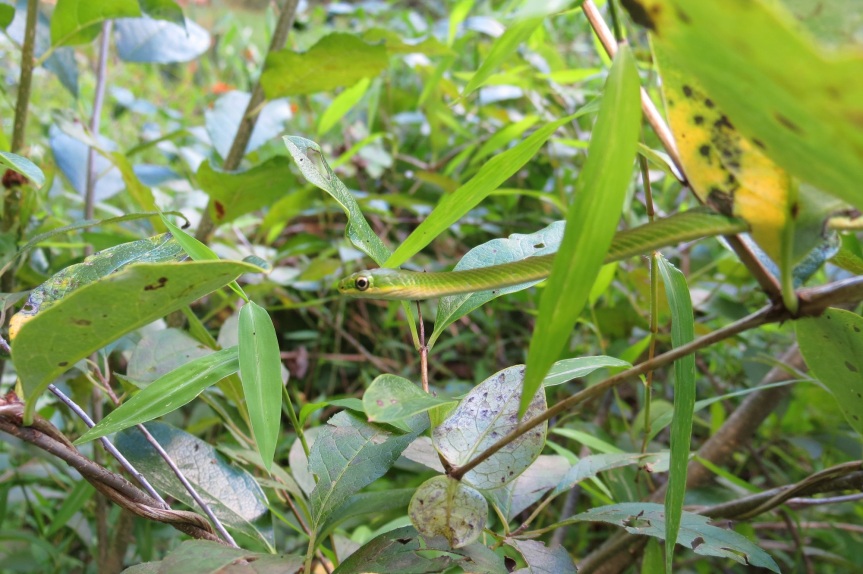Previous posts in this series:
Snakes in the garden, part 1: flowerbed snakelings
Snakes in the garden, part 2: the black snakes

Eastern garter snakes (Thamnophis sirtalis sirtalis) and Rough green snakes (Opheodrys aestivus) are occasional visitors to our garden, although their preferred habitat is probably closer to the creek that runs through a conservation easement adjacent to our property.
Eastern garter snake (Thamnophis sirtalis sirtalis)

The eastern garter snake has a huge range, from Massachusetts to Florida on the east coast, extending west to Minnesota and Canada north of the Great Lakes, south to Louisiana and east Texas on the Gulf of Mexico. It is a member of the same subfamily, the Natricinae, that includes North American water snakes and European grass snakes. Like many of their relatives, garter snakes can be grumpy when first caught, but although I have grabbed many garter snakes in my life, I have never actually been bitten. I have been on the receiving end of their defensive musk secretions, which they enthusiastically smear all over the place as they thrash around. (Their larger relative, the northern water snake is another matter. Those will bite.)
Smelly defenses notwithstanding, garter snakes usually settle down and become quite tame in captivity. Generations of children, yours truly included, have kept them as pets.
Garters eat frogs, toads, salamanders, earthworms, small fish–just about anything they can subdue and cram into their mouth, actually. Given their fondness for slimy, wet prey, I suspect that the occasional garters in the garden have strayed from the creek in search of a sunny basking spot.

Various other subspecies of Thamnophis sirtalis are found throughout North America from coast to coast, Canada to northern Mexico. If you garden anywhere in the United States, apart from the desert southwest, there is probably a garter snake nearby.

Rough Green Snake (Opheodrys aestivus)

Green snakes are long and thin and perfectly camouflaged for a life of climbing through the bushes in search of insects and spiders. We have only seen a couple in our garden, and those were crossing the driveway or a path where their bright green scales were a beacon rather than protective coloration. I wonder if they might be more common than they seem, just hard to spot. Supposedly, they prefer thick vegetation near water, and certainly they are common around a lake close to my workplace that I sometimes walk around at lunch time. There too, I usually notice them only when they cross the path in front of me.

When the children and I catch a green snake, it will thrash around in a panic for a few moments but then quickly calms down and climbs slowly from hand to hand or up our arms. Sometimes, they will mock strike, but they never bite.
I hope that by avoiding pesticides and densely planting the garden with a mix of shrubs and perennials to attract a wide variety of insects, I am creating good habitat for these beautiful snakes.


2 thoughts on “Snakes in the garden, part 3: garter and green snakes”